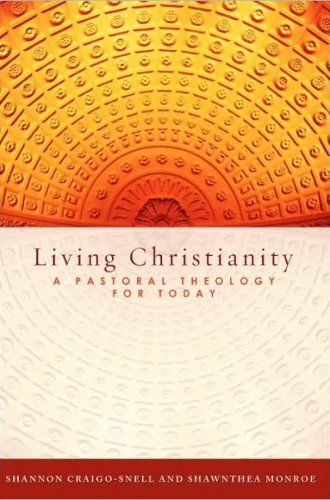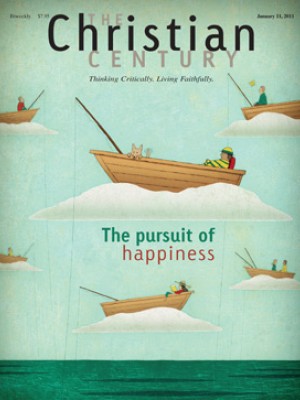A review of Living Christianity
What ought to be the relationship between the church and the academy? Does professional theology matter for congregational life, and vice versa? What do preachers and professors have to say to each other?
These questions are at the heart of Living Christianity, a collaborative effort by an Ivy League professor and a mainline pastor. Shannon Craigo-Snell and Shawnthea Monroe take up the subjects of creation, Christ, sin, church and heaven, treating them historically and homiletically, theologically and pastorally, noting their significance for lived discipleship in the church and the world.
Craigo-Snell, who teaches religious studies at Yale, wears her scholarship lightly as she skillfully elucidates classic Christian teaching, drawing on thinkers as diverse as Hans Frei, Karl Rahner, St. Anselm and Delores Williams. Monroe, senior pastor of Plymouth Church of Shaker Heights in Ohio, displays a seasoned preacher's wit and wisdom as she locates doctrine's rightful home in the messiness of Christian communities struggling, and sometimes succeeding, to be faithful.
Read our latest issue or browse back issues.
Both authors bring their individual gifts to the discussion. The book reads much like a conversation between friends; Craigo-Snell and Monroe have known each other since they were seminary classmates in the mid-1990s. The authors are comfortable crossing the often strictly regulated church-academy divide: Craigo-Snell frames her discussion of ecclesiology with her honest reflections and reservations about real-world congregations; in the same chapter, Monroe ably tackles Karl Barth's interpretation of the four marks of the church.
Living Christianity is written for pastors, theologians and laypeople. Persons in this last group have the most to gain, as the authors aim to foster the practice of thinking theologically.
For instance, in the chapter on creation, tired arguments about creationism and evolution are shown to be much less interesting than a view of scripture in which "the meaning of the text is inseparable from the stories themselves." Similarly, the authors note that sin is a theological category—not a universal descriptor—because of the priority of God's grace. And they treat Christology not merely as a set of propositions about Jesus' life and work but as a living doctrine that "does not stand in isolation, but affects every other aspect of faith."
In the final chapter, on heaven, the authors deviate from their pattern of writing alternating sections and instead answer questions from members of Monroe's United Church of Christ congregation. The questions are poignant and reveal what most churchgoers really want to know about life after death: "What do we do in heaven?" "Do we become angels?" "How good do I have to be to get to heaven?" "Will I recognize my sister who died in infancy?"
Craigo-Snell relies heavily on Rahner's theology in her responses. (One wonders why there's no mention of N. T. Wright's 2008 book on heaven, Surprised by Hope.) And Monroe, not surprisingly, draws on her pastoral experience of counseling the grieving. When Craigo-Snell seeks to refute the commonly held view that deceased loved ones become angels in heaven, Monroe counters with the claim that a conversation with a grief-stricken mother is not an occasion for lessons in theological orthodoxy. True enough. But the questions, answers and authors' exchanges are instructive for what they reveal about the challenges of long-term catechesis—about whether and how congregations can shape people who can articulate the faith that the church confesses.
There are a few missteps along the way. Some are in the form of oddly phrased observations like this one on the purpose of systematic theology: "It is learning how to weave your own theology," which, according to Craigo-Snell, should "vary with each individual." Or this from Monroe on the importance of understanding who Jesus Christ is: "The key is to become Christologically self-aware. For if we understand our particular Christology, then we can craft ways of worshipping and living that are coherent with our beliefs." These pronouncements seem out of place, inconsistent with the theological commitments that inform the authors' other views on their wide-ranging subjects. Indeed, they represent the kind of sloppy, liberal church-speak that this book seems designed, at least in part, to address.
An interesting inclusion in the book, which may also be something of a liability, is Craigo-Snell's use of performance studies and the writing of theater director and scholar Peter Brook (The Empty Space) in her discussion of ecclesiology. The problem is not with Craigo-Snell's analysis; the connections she makes between theater and church are compelling and worthy of deeper scrutiny. But it's a complex analogy she explores ("Representation is the way out of the trap of repetition, for representation constantly 'makes present,' denying time by making meanings of the past immediate again"); treating it in a few pages in a single chapter may create more confusion than clarity, especially for readers trying to navigate the already troubled waters of 21st-century ecclesiology.
The book's greatest strength is its witness to the joy of friendship rooted in a shared love of God and the church. Craigo-Snell and Monroe reveal the personal and professional rewards of attending to friendship through numerous life transitions and in spite of the obstacles of distance and time: each is better at what she does because of the other. And their book reminds us that friends not only enrich our lives, they make discipleship—the journey of living Christianity in and for the world—possible.







